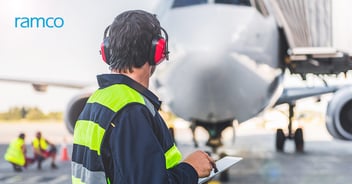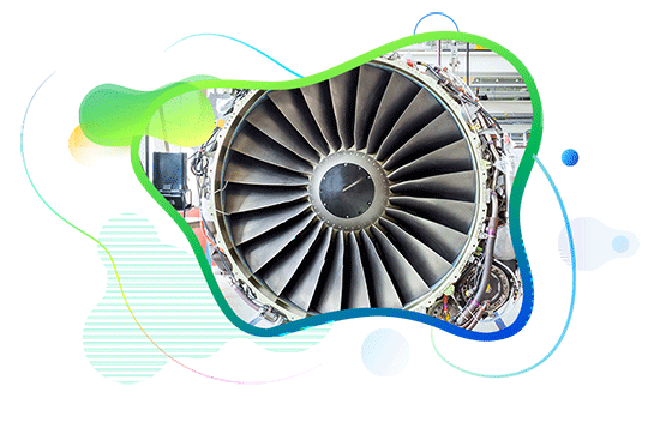
Sustainable flying to pave the way for a greener future?
Published :

The airline industry has almost consistently seen growth throughout its nearly 100 years of history, and now, suddenly after the pandemic, has witnessed a sharp decline. After demand bottoming out in 2020, it is time for the airlines all over the world to chart their new flying path, but the strategies have to be different now. There are bound to be structural changes with the industry witnessing a revamp in terms of demand and market consolidation. One of the core areas of focus for the airlines in the new normal is going to be the reduction in their carbon emissions. Infamous for its large carbon emissions, the global aviation industry needs to find a solution to this challenge especially now when sustainability and reduction of carbon emissions have become a core agenda.
While the aircraft are becoming increasingly fuel-efficient, it is believed that a modern aircraft burns almost half as much fuel as the planes did 30 years ago. Modernization of fleets and reducing fuel consumption enhances an airline’s profitability so it is a much-needed improvement. However, there is a greater need to focus on cutting down emissions steadily. An alternative is to increase consumption of sustainable aviation fuel (SAF) which can reduce carbon emissions from 70% to almost 100%. However, SAF is much more expensive in comparison to regular fuel and there is a supply challenge as well. That’s why there is less than a 1% share of SAF in the overall jet fuel consumption.
The ideal solution here requires more effort and the holistic involvement of all stakeholders. The aviation industry had set lofty targets for itself which included the start of scaling down annual emissions from 2020 onwards and going back to the 2005 levels by the year 2050. It is difficult to assess whether or how much of a negative impact will be caused by the pandemic.
While the governments that participated in the Paris Accords haven’t set any formal carbon targets for the aviation sector, it is undeniable that the high emissions from the flying machines are on the public radar. In the new normal, airlines stand to gain greater love and support from the flying public if they demonstrate their intent to cut carbon emissions. A lot of frequent flyers often express concern about the carbon footprint of each flight they take. Business investors are also showing a preference for sectors that are either carbon neutral or contributing to global reduction in carbon emissions.
Apart from sustainable aviation fuels, the revamp of aircraft technology and design changes which have seen aircraft become increasingly aerodynamic, a key enabler of carbon efficiency lies in operational efficiency in every aspect of Aircraft lifecycle such as embracing more efficient flight routing with the use of advanced flight operations, exploring hybrid and electric aircraft, and further reducing emissions through innovations like carbon capture. Airlines need to step up their game by leveraging all these avenues to reduce carbon footprint.
Enterprise asset management (EAM) involves the management of mission critical assets of an organization throughout each asset's lifecycle. EAM is used to plan, optimize, execute, and track the needed maintenance activities with the associated priorities, skills, materials, tools, and information. The aim is to optimize the quality and utilization of assets throughout their lifecycle, increase productive uptime and reduce operational costs.
Enterprise asset management (EAM) involves the management of the maintenance of physical assets of an organization throughout each asset's lifecycle. EAM is used to plan, optimize, execute, and track the needed maintenance activities with the associated priorities, skills, materials, tools, and information.
The software helps in effective maintenance of assets through preventive, predictive, shutdown and breakdown maintenance strategies. The system also helps enterprises mitigate equipment risks by enhanced safety standards. The streamlined operations and improved asset performance helps organizations increase their investment effectiveness.
EAM is important because it helps organizations track, assess, manage and optimize asset quality and reliability. Asset intensive Organizations have hundreds, thousands, even millions of assets which needs to be maintained to maximize / optimize life of these assets to increase the return on investment.
The key features of effective EAM are:
Asset Intensive companies under the following Industries :
Contact us for a meeting and schedule a demo
This differs on case to case basis, based on the type of installation and unique industry specific requirements. Contact us for a meeting and schedule a demo.
This differs on case to case basis, based on the type of installation and unique industry specific requirements. Contact us for a meeting and schedule a demo.
Stay Connected, follow us on LinkedIn / Twitter to know more about EAM Software latest trends.

Prakash Babu Devara is Head of Aviation Marketing at Ramco Systems, bringing over 15 years of experience in marketing and branding. With a passion for aviation and technology, he is dedicated to bringing the best of both worlds together to drive value proliferation. Prakash has a proven track record in developing and implementing effective marketing strategies, building strong brands, and driving business growth. In addition to his role at Ramco, he is an aviation blogger and a seasoned public speaker known for communicating complex ideas clearly and engagingly.

All Rights Reserved. © Copyright 2024. Ramco Systems.